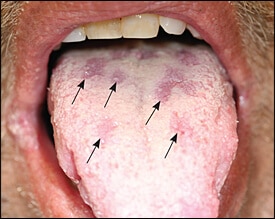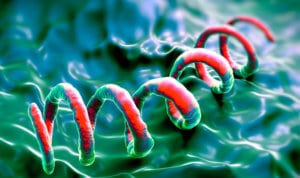

Syphilis, or “the great pox” is an ancient disease that’s been ravaging humanity since medieval times. Up until the 1900’s, there was no effective treatment for it. However, with the advent of penecillin, the disease was swiftly contained and is now only a footnote in medical history books.
At least, that’s what aspiring medical students in the 80’s and 90’s were told. With just 6000 cases of syphilis reported in 2000, the CDC thought that the disease’s total extinction was within our reach. Even as recent as 10 years ago, most medical experts considered Syphilis to be “on the ropes” as a disease.
But instead, this very curable sexually transmitted disease has come roaring back into the spotlight. Between 2014 and 2015, rates of syphilis increased by over 17%. Today, new Syphilis infections are at the highest levels they’ve been in over 20 years, with 23,872 new cases reported. The rates have increased in every region, a majority of age groups, and almost every ethnicity. And in the United States we’ve seen a rise in congenital syphilis — something even developing countries have been able to eliminate.
What is the reason for this meteoric rise? And why have we been unsuccessful at completely eradicating this disease, even though we’ve been able to cure it for over 100 years?
Public Health Budget Cuts
One frequently cited reason is sub-par funding for public health budgets. The CDC has had more than a billion dollars cut out of its budget since 2005. And since 2008, more than 44,000 jobs have been cut from local health departments. “This is a failure of the healthcare system” said Gail Bolan, CDC director of STD Prevention. “Our public health infrastructure is at the point of breaking” said Bill Smith, the executive director of the National Coalition of STD Directors.
Social Media & Dating Apps
Health experts think that social media is playing a strong role in the spread of STDs of all kinds, including syphilis. Apps like Tinder and Grindr make it very easy to have anonymous sexual encounters, or only know the person through a profile photo and a short description. So when someone using these apps tests positive for an STD, it becomes very difficult to track down their previous partners and let them know they are at risk.
Highly Contagious with Subtle Symptoms
Syphilis is transmissable through almost every sexual means, including oral, vaginal, and anal sex. But it also presents with a unique and unpredictable set of symptoms, or even no noticeable symptoms at all. This one-two punch makes it both highly contagious and hard to diagnose without an STD Test.
Syphilis is a bacterial infection that is transmitted through skin-to-skin contact with pus-filled sores. Within the first few weeks after being infected, sores will usually appear in the location they are infected. So they could be in your mouth, your genitals, or your anus. There might be only one sore, or a few. The sores are painless, so if you don’t notice them, you won’t know they are even there. If a partner rubs against these sores, they are at a high risk for infection of syphilis themselves. The sores will heal after a month or so. This is the first stage of syphilis.
A few weeks after healing, the second stage begins. A rash appears, usually starting on your torso, but it can expand to cover your whole body. The rash doesn’t usually itch, but it can produce sores in your mouth or genitals. Some people also experience other symptoms like fever, sore throat, or ache-y muscles, but not everyone does. The second stage goes away after a few weeks, or can continue sporadically for up to a year.
If not treated by this point, Syphilis begins to earn its ominous reputation. It actually seems to go away on its own. Sometimes nothing further happens for years. But in 15-30 percent of people, the third and final stage of syphilis comes back full force. Tertiary syphilis damages your brain, heart, bones, eyes, nerves, joints and blood vessels. Visual impairments, hearing loss, stroke, and even death are all common results. In pregnant women, it can cause stillbirths, and significant health problems in babies that survive.
How can I tell if I have Syphilis?
Because Syphilis has so many different symptoms, the only way to know for sure is to get an STD test. Private Testing Center offers fast, affordable and accurate STD testing at one of our 1200 locations across the nation.
If you do test positive for Syphilis, don’t worry! There is a simple cure.
Private Testing Center offers affordable and convenient testing, in a constant effort to prevent the spread of Herpes, HIV and other STDs. Our primary goal is to to educate people about the risks associated with unprotected sexual activity and also the importance routine screenings play in prevention and treatment of Herpes, HIV and STDs.
All of our testing is performed through the blood and urine. No pelvic exams, painful swabs or embarrassing visual exams are necessary, as blood and urine testing is the most accurate.
Our counselors are the most knowledgeable, honest and ethical in the industry. Feel confident knowing that you can speak freely to our counselors about any situation or issue. You will never be judged by anyone at Private Testing Center. We will always make sure the right testing is being done at the right time. With Private Testing Center, you can feel confident knowing that your test results will not only be fast, but accurate as well.

